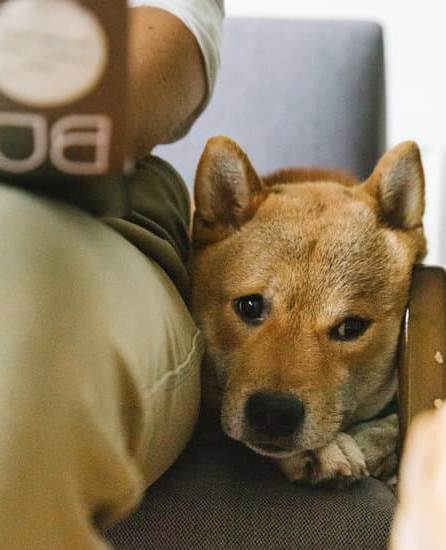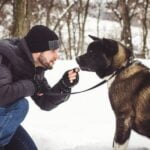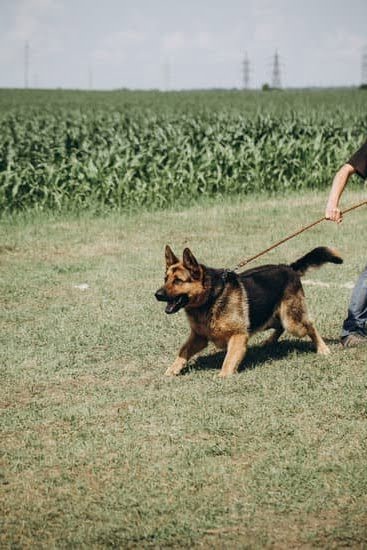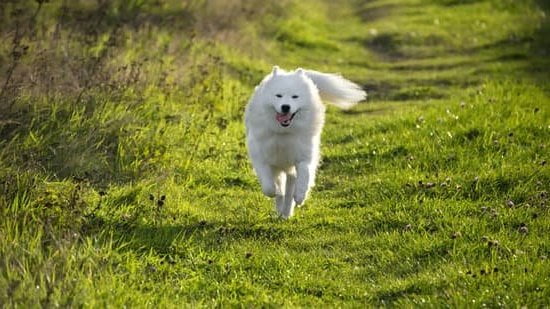Does your dog often ignore your calls to come inside? In this article, we will explore how to train your dog to come inside, using positive reinforcement techniques and creating a consistent routine for training sessions. We’ll also discuss the importance of establishing boundaries and reinforcing the come command in different environments. Additionally, we’ll address common challenges such as overcoming distractions and avoiding resistance.
Teaching your dog to come inside is not just about obedience, but it is also crucial for their safety and well-being. Whether you’re dealing with a stubborn dog or simply looking to improve their recall skills, building a strong recall command is essential. By incorporating play and rewards into the training, you can make it fun for your dog while also ensuring that they respond to your commands effectively.
In this article, we will delve into the basics of establishing a strong recall command and address common challenges such as overoming distractions and avoiding resistance. Additionally, we will provide tips on troubleshooting when your dog doesn’t respond to the come command and discuss when it may be necessary to seek professional help from a trainer for additional assistance. Stay tuned for practical advice on how to make training your dog to come inside an enjoyable and successful experience.
Basic Training
Establishing a strong recall command is essential when training your dog to come inside. Whether you’re calling your dog in from the backyard or at the park, having a reliable recall command ensures that your pet will respond promptly and come inside when called. This section will discuss the basic steps to train your dog to come inside, as well as some tips on how to reinforce the recall command.
Using Clear and Consistent Verbal Cues
When training your dog to come inside, it’s important to use clear and consistent verbal cues. Choose a specific word or phrase, such as “come” or “inside,” and use it consistently during training sessions. Avoid using multiple commands for the same action, as this can lead to confusion for your dog.
Practice in Low-Distraction Environments
Start training your dog in a low-distraction environment, such as inside your home or in a quiet backyard. This will allow your dog to focus on learning the recall command without being overwhelmed by external stimuli. Once your pet has mastered the command in these settings, gradually introduce distractions to help reinforce their response in different situations.
Using Positive Reinforcement Techniques
Positive reinforcement is key when teaching your dog to come inside. Use treats, praise, and affection to reward your pet each time they respond to the recall command. This will create positive associations with coming inside and encourage them to respond promptly in the future. Remember to be patient and consistent with your training efforts, as learning a reliable recall command takes time and practice.
By following these basic training steps and incorporating positive reinforcement techniques, you can effectively teach your dog to come inside consistently and reliably. With patience and dedication, you’ll strengthen their recall skills and enjoy a harmonious relationship with your furry companion both indoors and outdoors.
Using Positive Reinforcement Techniques to Encourage Your Dog to Come Inside
Positive reinforcement is a powerful tool when it comes to training your dog to come inside. By rewarding your dog for obeying the come command, you can effectively encourage this behavior and make it more likely that your dog will respond to your calls in the future. One of the most common ways to use positive reinforcement is by offering treats as a reward.
When your dog comes inside after being called, immediately give them a tasty treat and plenty of praise. This helps to create a positive association with coming inside and reinforces the behavior.
It’s important to be consistent with your positive reinforcement techniques when training your dog to come inside. Always have treats on hand when calling your dog indoors, so you can instantly reward them for complying with your command. In addition to treats, verbal praise and petting can also be effective forms of positive reinforcement. Show excitement and enthusiasm when your dog responds to the come command, as this will further motivate them to repeat the behavior.
Incorporating play into training sessions can also be an effective form of positive reinforcement. If your dog enjoys playing with toys, use this as a reward for coming inside. Tossing their favorite toy or engaging in a brief play session once they enter the house can make the experience enjoyable for them, making it more likely that they will continue to respond positively to the recall command.
| Positive Reinforcement Techniques | Examples |
|---|---|
| Offering treats | Giving a tasty treat when your dog comes inside |
| Verbal praise | Praising and encouraging your dog verbally when they respond |
| Play rewards | Engaging in play with your dog as a reward for coming indoors |
Addressing Common Challenges
Training your dog to come inside can be a challenging task, especially when there are distractions or if your dog is resistant to following commands. However, addressing these common challenges is essential for ensuring that your dog learns to respond reliably when called.
One effective way to overcome distractions and avoid resistance is to use positive reinforcement techniques. By offering treats, praise, or toys as rewards for coming inside, you can motivate your dog to obey the recall command. This creates a positive association with returning indoors, making it more likely that your dog will respond when called.
Consistency is key when training your dog to come inside. Creating a routine for training sessions and using the same verbal cue each time can help reinforce the behavior. By consistently practicing the recall command in different environments and situations, you can help your dog generalize the behavior and improve their responsiveness.
It’s important to remember that every dog is unique, and some may require additional patience and understanding during training. If your dog continues to struggle with coming inside despite consistent training efforts, consider seeking professional help from a certified trainer who can provide individualized guidance and support.
| Technique | Effectiveness |
|---|---|
| Positive Reinforcement | Motivates dogs to respond positively |
| Consistent Training | Reinforces behavior in different situations |
| Professional Help | Individualized guidance and support |
Creating a Consistent Routine for Training Sessions
When it comes to training your dog to come inside, consistency is key. Setting up a regular training schedule will help your dog understand what is expected of them and reinforce the command to come inside. Here are some ways you can create a consistent routine for your training sessions:
1. Set specific times for training: Choose times during the day when your dog is most active and alert, such as in the morning or early evening. This will help them be more receptive to learning and following commands.
2. Use the same location: Find a quiet and familiar spot in your home or yard where you can conduct your training sessions. Minimizing distractions will help your dog focus on learning the come command.
3. Keep the sessions short and frequent: Dogs have short attention spans, so aim for brief but regular training sessions throughout the week. This will prevent them from getting bored or frustrated and make the training process more effective.
By establishing a consistent routine for training sessions, you can help your dog learn the come command effectively and efficiently. Remember to be patient and positive with your approach, and soon enough, your furry friend will confidently respond to your call to come inside.
Remember these points as you establish a routine:
Consistency within these elements will only enhance how to train your dog to come inside.
Incorporating Play and Rewards Into Training to Make It Fun for Your Dog
Choosing the Right Play and Rewards
When it comes to training your dog to come inside, incorporating play and rewards can make the process enjoyable for both you and your furry friend. It’s important to choose the right type of play and rewards that will motivate your dog to respond to the come command. Some dogs may be more food-motivated, while others may respond better to play or verbal praise. Experiment with different types of rewards to see what works best for your dog.
Using Toys and Treats as Motivators
To make training sessions fun for your dog, incorporate their favorite toys or treats as motivators. When they successfully come inside when called, reward them with a game of fetch, a favorite toy, or a tasty treat. This positive reinforcement will help strengthen their recall command and create a positive association with coming inside.
Making Training Sessions Enjoyable
Training should be an enjoyable experience for both you and your dog. Use a happy tone of voice, offer plenty of praise, and engage in playful activities during training sessions. Keep the sessions short and end on a positive note, so your dog looks forward to the next training session. By making training fun and rewarding for your dog, they will be more eager to respond to the come command when it is time to come inside.
By incorporating play and rewards into your training sessions, you can make the process enjoyable for your dog while reinforcing their recall command. With patience, consistency, and plenty of positive reinforcement, you can effectively train your dog to come inside when called.
Establishing Boundaries and Reinforcing the Come Command in Different Environments
When training your dog to come inside, it’s crucial to establish boundaries and reinforce the come command in different environments. Dogs are often more prone to distraction when outside, so teaching them to come inside regardless of the location is essential for their safety and your peace of mind. Here are some tips for establishing boundaries and reinforcing the come command in various settings.
Start by practicing the come command in a familiar environment, such as your backyard or a quiet park. Once your dog consistently responds to the command in these controlled environments, gradually transition to more challenging settings, such as a busy street or a crowded dog park. Use positive reinforcement, such as treats or praise, to motivate your dog to come inside regardless of the distractions present.
It’s important to be patient and consistent when reinforcing the come command in different environments. Dogs thrive on routine, so incorporating regular training sessions in various locations will help solidify their understanding of the command. Remember that every new environment presents a unique set of distractions, so be prepared to adjust your training approach as needed.
Incorporating play and rewards into training can also make it fun for your dog and strengthen their recall abilities in different locations. Engage your dog with their favorite toys or games as a reward for coming inside, and vary the rewards based on the level of distraction present. Consistency, patience, and positive reinforcement are key when establishing boundaries and reinforcing the come command in different environments while training your dog to come inside.
Troubleshooting
If your dog isn’t responding to the come command, it can be frustrating and concerning. However, it’s important to remain patient and continue working with your dog to improve their response. Here are some troubleshooting tips for when your dog doesn’t respond to the come command:
- Evaluate the training environment: Sometimes, the environment can be too distracting for your dog to focus on the come command. Make sure you’re starting training sessions in a quiet and familiar environment before gradually introducing more distractions.
- Check for consistent reinforcement: Ensure that you and your family members are using the same verbal cue and hand signal for the come command. Inconsistent cues can confuse your dog and make it harder for them to understand what is expected of them.
- Avoid negative reinforcement: Never punish or scold your dog if they don’t immediately respond to the come command. This can create a negative association with the command and cause reluctance in obeying in the future.
Remember, training your dog to come inside takes time and patience. By consistently reinforcing positive behavior, creating a consistent routine, and using rewards and play as motivation, you can effectively train your dog to respond to the come command.
If you’re still struggling despite these troubleshooting tips, it may be beneficial to seek professional help from a certified dog trainer who specializes in recall training. With dedication and proper guidance, your dog can learn to reliably come inside when called.
Seeking Professional Help
In conclusion, training your dog to come inside is an important aspect of their overall obedience and safety. Establishing a strong recall command through basic training and positive reinforcement techniques is essential in ensuring that your dog responds promptly when called. By addressing common challenges such as distractions and resistance, and creating a consistent routine for training sessions, you can effectively teach your dog to come inside.
Incorporating play and rewards into training not only makes it fun for your dog but also strengthens the bond between you and your pet. It is essential to establish boundaries and reinforce the come command in different environments to ensure that your dog follows through regardless of the situation. However, when faced with difficulties in training or if your dog consistently does not respond to the come command, considering hiring a professional trainer for additional assistance can be beneficial.
Ultimately, with patience, consistency, and the right approach, you can successfully train your dog to come inside. The key is to understand your pet’s behavior and motivations while using positive reinforcement techniques. Whether you choose to train your dog on your own or seek professional help, the end goal is always a well-behaved and obedient furry companion who can be trusted to come inside when called.
Frequently Asked Questions
What to Do if Your Dog Won’t Come Inside?
If your dog won’t come inside, it’s important to first figure out why. Is there something outside that is distracting or scaring them? Try using treats or toys to entice them, and always use positive reinforcement when they do come inside.
How Do You Get a Stubborn Dog to Come When Called?
Dealing with a stubborn dog can be frustrating, but using patience and positive reinforcement is key. Avoid using punishment or force, as this can make the situation worse. Practice recall commands in a safe, enclosed area and gradually work up to more challenging environments.
How Do You Train an Outside Dog to Come Inside?
Training an outside dog to come inside requires patience and consistency. Start by building a positive association with being indoors, offering treats or praise when they voluntarily come inside. Gradually increase the amount of time they spend indoors while continuing to reinforce good behavior.

Welcome to the blog! I am a professional dog trainer and have been working with dogs for many years. In this blog, I will be discussing various topics related to dog training, including tips, tricks, and advice. I hope you find this information helpful and informative. Thanks for reading!





